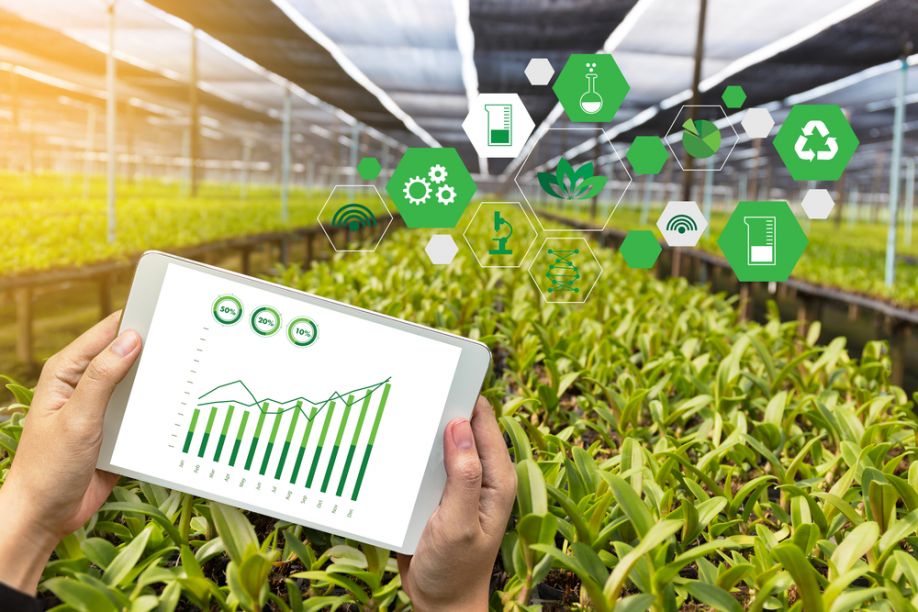Simulating Crops, Saving Resources: The Power of Digital Agriculture

Farmers may not think of themselves as needing advanced or specialized technology, but the truth is that food production is always in need of greater efficiency. We face what the United Nations calls a “global food crisis,” with over 319 million people suffering from acute hunger in more than 67 countries worldwide.
At the same time, it’s important to remember that innovations from manual tools to the tractor and GPS have made farming operations more efficient over the centuries. So, why wouldn’t farmers strive to be at the forefront of digital technology?
One technological innovation that should interest those in the agricultural sector is the digital twin. Once used primarily in industrial and applied services settings, the digital twin is a revolutionary spatial computing technology with wide-reaching potential. Digital twins provide users with highly accurate digital replicas of a physical asset. When sensors are attached to the physical asset, they can provide a real-time data stream of constant insights to the operator.
The power of digital twins is made even more significant when combined with the capabilities of artificial intelligence, as this enables predictive analytics that are far better than any we have ever seen before. These tools allow farmers to run accurate, realistic simulations of what might happen to their crops if they adjust certain parameters, such as the success of specific planting patterns or the use of new forms of pest control.
How agriculture can use digital twin technology
The origins of digital twin technology in the industrial sector relate to the replication of machines, so it makes sense that one of the first use cases of digital twins for agriculture is the simulation of farm tools and machines, such as tractors, harvesters, threshers, and more. When sensors are affixed to various components of the machinery, they can track the status and efficiency of the machine and its parts. This is useful for monitoring the efficiency of particular machines, but can also be helpful in predictive maintenance. When a component is not functioning properly and needs maintenance or replacement, the system can alert the user and prompt them to take proactive action.
However, even more exciting for farmers is that they can create digital twins of their crop fields using information from tools such as drones or satellites, allowing them to make realistic replicas of their fields. As farmers re-collect data from the fields, their digital twins will then reflect the real-time status of their crops, which can be very useful for farmers who want to better understand the status of their crops without having to venture out into the fields.
Additionally, digital twins are extremely advantageous tools for helping agricultural businesses monitor and optimize their supply chains. Using digital twins of every link in the supply chain, from the field to the factory, warehouse, and supermarket, enables producers to have a comprehensive view of the agricultural supply chain. It is crucial for farmers to have a thorough understanding of every aspect of the supply chain, as the efficiency of later links in the chain can significantly impact the demand for their production.
The effects of digital twin technology on agricultural efficiency
Farmers should realize the tremendous benefit that digital twin technology will have for the efficiency of their agricultural operations. It will help them streamline processes, problem-solve more proactively, and ultimately save money. When combined with automated farming tools like self-driving tractors or robotic harvesters, digital twins can also bring agricultural operations one step closer to full automation, allowing farmers to increase their production yield without incurring higher labor costs, thereby helping them harvest more food more efficiently.
One critical way in which the use of digital twin technology could affect efficiency is by supporting sustainable farming practices. For example, the predictive analytics function of digital twins can enable farmers to reduce their dependence on unsustainable practices, such as test cropping. Digital twins of their fields can allow them to run accurate simulations of how certain variables will affect their crop yields without wasting resources like water or seeds. Additionally, digital twins can be utilized to optimize farming operations, including practices such as fertilizer usage and water consumption.
The increased efficiency brought about by digital twin technology could also prove influential in addressing international issues like global food insecurity. When farmers and agricultural producers have a better understanding of their supply chain and efficiency, they can better understand how to address the constantly changing food needs of our ever-evolving and growing population.
Indeed, farmers who aim to enhance their efficiency and stay at the forefront of innovation should invest in digital twin technology. Thanks to this tool’s ability to power in-depth real-time monitoring and advanced predictive analytics, farmers will have a better understanding of their crops, supply chains, and operations at every stage of the process. In doing so, they can be better equipped to face the global food crisis we currently face.
 Joseph Callahan is a serial entrepreneur, perpetual innovator, and award-winning business leader with over 30 years of experience in technology development. As CEO of Ciright, he has pioneered groundbreaking solutions across industries, holding multiple patents in digital media, IoT, fintech, and the metaverse. Callahan is a proud Drexel University graduate and has been recognized with numerous accolades, including EY’s Entrepreneur of the Year – Technology.
Joseph Callahan is a serial entrepreneur, perpetual innovator, and award-winning business leader with over 30 years of experience in technology development. As CEO of Ciright, he has pioneered groundbreaking solutions across industries, holding multiple patents in digital media, IoT, fintech, and the metaverse. Callahan is a proud Drexel University graduate and has been recognized with numerous accolades, including EY’s Entrepreneur of the Year – Technology.
Comments (0)
This post does not have any comments. Be the first to leave a comment below.
Featured Product

